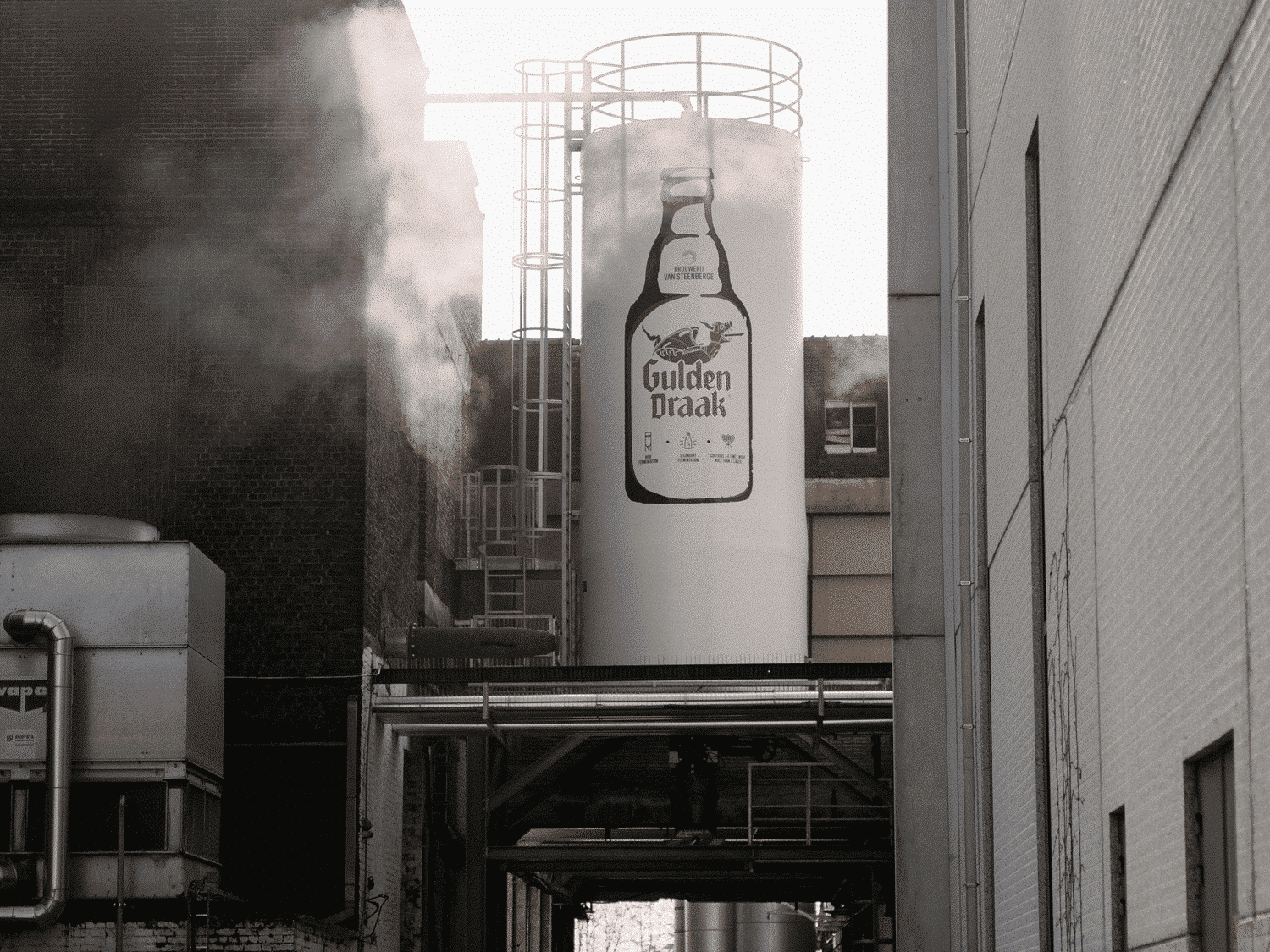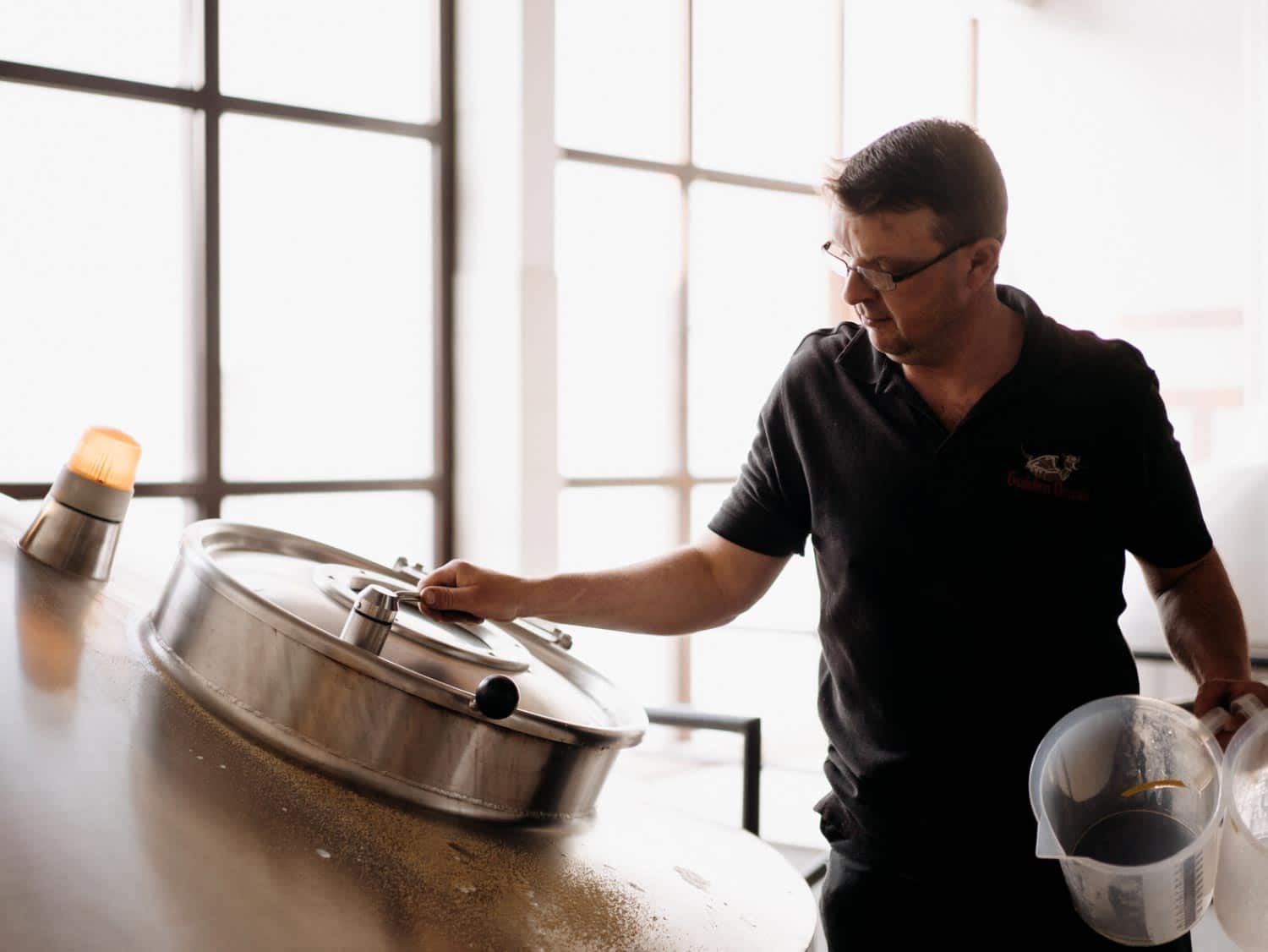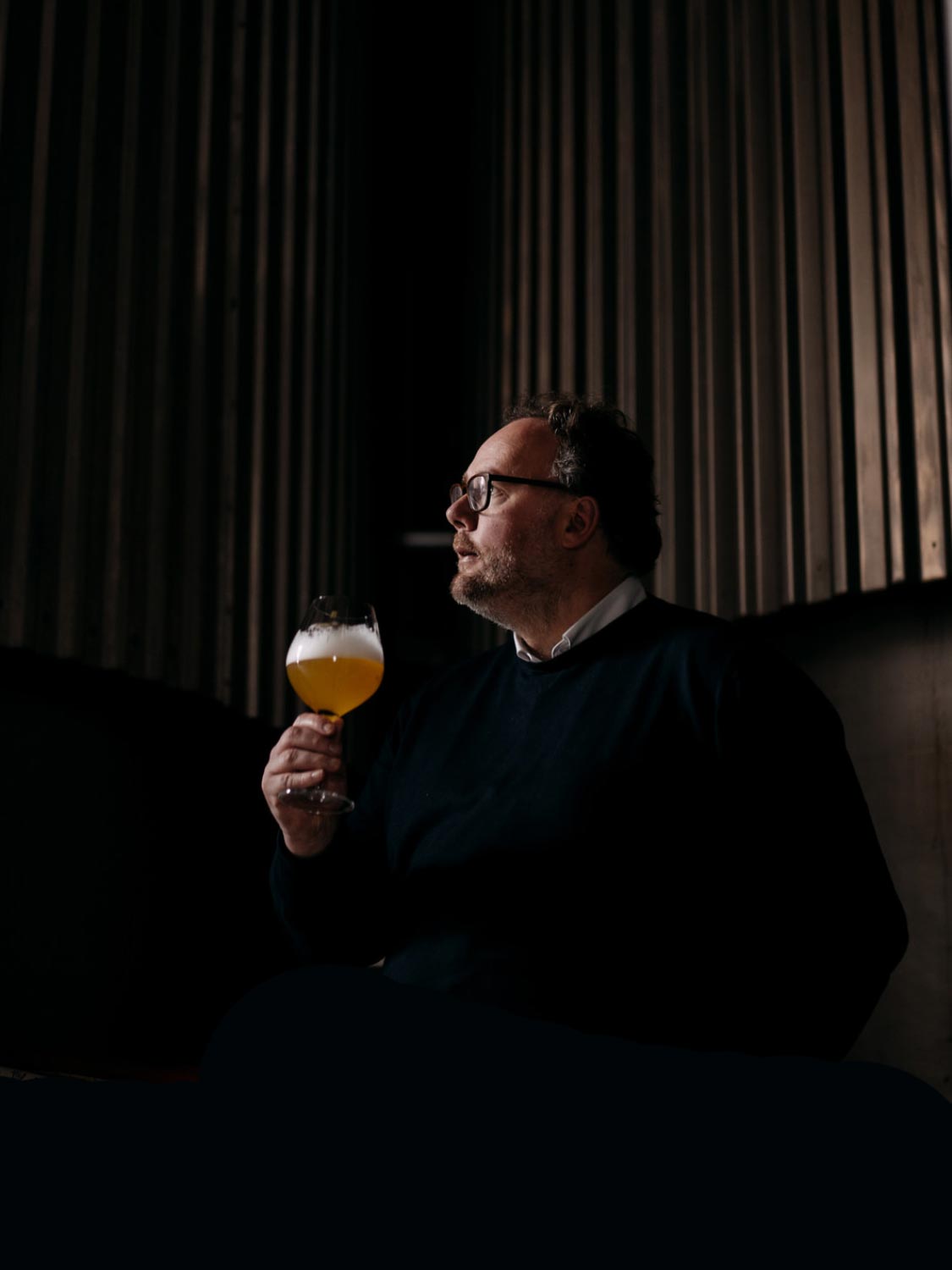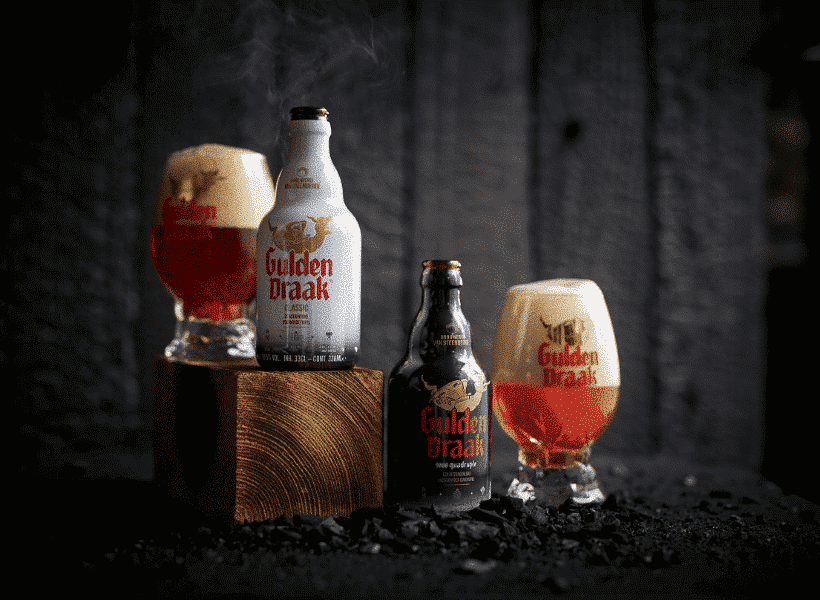6 generations of independent and local brewing
The Van Steenberge brewery stands for independence, progress and growth. It emphasises the traditional art of brewing adapted to the current technological developments and guarantees a reliable quality and service. Respect for our employees and care for the environment are central to our policy.

The brewing process
The brewing hall
Water, various malt and hop varieties and other ingredients of the highest quality are processed in several consecutive steps to produce wort, the sweet starter liquid for beer.

Fermentation happens in cylindroconical tanks at a temperature of 22 to 25 degrees, depending on the type of yeast. The heat from the fermentation is neutralised by coolant circulating between the interior and exterior walls.
Our beers each have their own type of yeast, which gives each beer its typical character. The duration of the fermentation depends on the amount of fermentable brewing sugars.
After the fermentation process, most of the yeast is removed by a centrifuge. Now it is time for the lagering process.
Fermentation

The Lagering
Lagering is a maturing process that gives the beer a full flavour and fine aroma. The yeast process is discontinued naturally at a temperature of 0 degrees Celsius.
The filtration
After lagering, the remaining yeast particles and hop residue are removed in a very powerful centrifuge called a polisher. Beers that do not require any secondary fermentation then go through a sheet filter to achieve perfect clarity.

The propagator
The ‘heart’ of the brewery.
1 Yeast propagator for propagating our own different yeast varieties
2 Wort tanks (wort is a semi-finished product from the brewing hall)
3 Yeast collection tanks
1 Hot water tank

The empty bottles are thoroughly cleaned and disinfected in the rinsing machine before they can be filled. 4 automatic conformity checks are performed before the bottles are filled. The labelling machine applies the appropriate labels to the full bottles and the bottles are automatically placed in the crates further along the line.
The bottling plant

The keg filling line
Kegs of different sizes are automatically filled at high speed after their interior and exterior have been cleaned and disinfected.

Unique secondary fermentation
The unique secondary fermentation starts when yeast and sugar are added during bottling. The beer is then left to mature for 2 weeks in a warm room of about 20 degrees Celsius where the yeast can do its work. It has taken several generations to fine-tune this extremely complex process. 2 types of yeast are used for secondary fermentation: the first is an active yeast that sets the secondary fermentation process in motion and the second provides a typical, rich flavour. The more the beer matures, the more powerful its aroma will be and the fuller its flavour and colour will become. It is therefore up to you how you prefer your Augustijn, Gulden Draak of Piraat: fruity and mild (within 3 months of bottling), or complex and full of character (after 18 months). Why not keep a number of bottles at room temperature for an extended period of time, so you can taste the substantial difference yourself?

